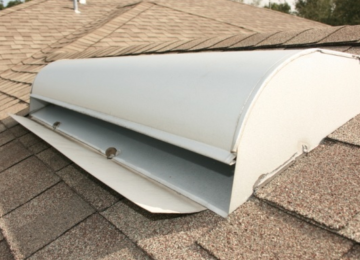Common Locations of Asbestos Materials
Asbestos was widely used in building materials for its fire-resistant and insulating properties. In older Navy housing, you might find it in several places. Think about areas that needed protection from heat or sound. Common spots include:
- Ceiling tiles: Many textured or acoustic ceiling tiles installed before the 1980s contain asbestos.
- Floor tiles and adhesives: Vinyl floor tiles, especially 9×9 inch squares, and the black mastic used to glue them down are frequent sources.
- Insulation: Pipe insulation, boiler wraps, and attic insulation could be made with asbestos-containing materials.
- Textured paints and coatings: Some popcorn ceilings and decorative wall coatings used asbestos for texture and durability.
- Gaskets and seals: Found in older appliances, furnaces, and plumbing systems.
Visual Clues and Potential Indicators
Spotting asbestos just by looking can be tricky, as it’s often mixed into other materials. However, some visual cues might raise suspicion. Materials that look like they are made of a fibrous or fluffy substance, especially if they are old and showing signs of wear, could be suspect. The presence of older building materials, particularly those installed before the mid-1980s, is a significant indicator. If you see materials that seem unusually durable or resistant to heat, that’s another point to consider. However, visual inspection alone is not enough for a definitive identification.
Historical Context of Asbestos Use
Asbestos was a popular building material from the early 1900s through the 1970s. Its widespread use was due to its affordability and remarkable performance characteristics. The U.S. military, including the Navy, utilized asbestos extensively in construction and renovation projects, including housing. This was because it offered excellent fireproofing and insulation, which were seen as major benefits for military installations and personnel housing. Regulations began to limit its use in the late 1970s and early 1980s, but many buildings constructed during its peak usage period still contain these materials. Understanding this history helps explain why asbestos is a concern in older Navy residential buildings.
Health Risks Associated with Asbestos Exposure
Understanding Asbestos-Related Diseases
Exposure to asbestos fibers can lead to serious health problems, primarily affecting the lungs. These diseases often take a long time to develop, sometimes decades after initial exposure. The most well-known conditions include asbestosis, a scarring of the lung tissue that makes breathing difficult; lung cancer, which is more common in individuals who also smoke; and mesothelioma, a rare but aggressive cancer of the lining of the lungs, abdomen, or heart. The risk of developing these diseases is directly related to the amount and duration of asbestos exposure.
Routes of Exposure in Residential Settings
In residential buildings, asbestos exposure typically occurs when materials containing asbestos are disturbed. This disturbance can happen during renovation, repair, or demolition activities. When asbestos-containing materials (ACMs) are damaged, tiny fibers become airborne and can be inhaled. Common scenarios include:
- Drilling or cutting into asbestos-containing insulation or ceiling tiles.
- Sanding or scraping old paint that may contain asbestos.
- Accidental damage to asbestos-wrapped pipes or boilers.
- Simply disturbing settled dust in areas with degraded ACMs.
Long-Term Health Consequences
The consequences of asbestos exposure are significant and long-lasting. Because asbestos-related diseases have such a long latency period, individuals may not experience symptoms for many years. This makes early detection and prevention particularly important. The progressive nature of these illnesses can lead to:
- Chronic respiratory issues and shortness of breath.
- Reduced lung function and capacity.
- Increased risk of developing fatal cancers.
- A diminished quality of life due to ongoing health complications.
Asbestos Management Protocols for Navy Housing
Managing asbestos in Navy residential buildings involves a structured approach to protect residents and maintain safe living environments. This process is guided by specific regulations and requires diligent procedures.
Regulatory Frameworks Governing Asbestos
The use and management of asbestos are subject to federal and state laws, as well as specific military directives. These regulations set standards for:
- Identifying asbestos-containing materials (ACMs).
- Controlling exposure during renovation or demolition.
- Disposing of asbestos waste.
- Training personnel who work with asbestos.
Compliance with these frameworks is mandatory for all Navy housing.
Inspection and Testing Procedures
Before any work that might disturb building materials, a thorough inspection is necessary. This typically involves:
- Visual Assessment: Trained personnel look for materials commonly known to contain asbestos, such as insulation, floor tiles, and ceiling panels.
- Sampling: If suspect materials are found, samples are collected.
- Laboratory Analysis: Samples are sent to accredited laboratories for testing to confirm the presence and type of asbestos.
This systematic approach helps determine the extent of potential asbestos hazards.
Safe Handling and Abatement Practices
When asbestos is identified and requires removal or repair, strict protocols are followed. These practices aim to minimize fiber release into the air:
- Containment: The work area is sealed off to prevent asbestos fibers from spreading.
- Personal Protective Equipment (PPE): Workers wear specialized gear, including respirators.
- Wet Methods: Materials are often wetted down to reduce dust.
- Proper Disposal: Asbestos waste is bagged, labeled, and transported according to hazardous waste regulations.
Abatement is performed by licensed and certified professionals to ensure safety and regulatory compliance.
Resident Responsibilities and Awareness
Reporting Suspected Asbestos-Containing Materials
Residents play a key role in maintaining a safe living environment. If you suspect that materials in your Navy housing may contain asbestos, it is important to report these concerns promptly. Do not attempt to disturb or remove any suspect materials yourself. Instead, follow the established procedures for reporting. This typically involves contacting the base housing office or the designated facilities management team. Provide as much detail as possible about the location and appearance of the material. This proactive approach helps prevent potential exposure and allows for proper assessment by trained professionals.
Preventing Disturbance of Potential Asbestos
Many asbestos-containing materials (ACMs) are safe as long as they remain intact and undisturbed. Activities that can release asbestos fibers into the air include drilling, sanding, cutting, or scraping. Therefore, residents should avoid performing any renovations, repairs, or even minor alterations that might involve these actions on suspect materials. This includes tasks like hanging heavy pictures that require drilling into walls or ceilings, or attempting to repair damaged flooring or insulation. If a material appears damaged or friable (crumbly), it poses a higher risk, and extra caution is advised.
Accessing Information on Navy Asbestos Policies
Understanding the policies and procedures related to asbestos in Navy housing is vital for residents. Information regarding asbestos management, inspection schedules, and resident guidelines should be readily available. Residents are encouraged to seek out and review these documents, which are often provided during the move-in process or can be accessed through official Navy housing portals or by contacting the relevant administrative offices. Knowing your rights and responsibilities empowers you to participate effectively in maintaining a healthy living space.
Mitigating Asbestos Risks in Navy Residential Buildings
The Importance of Professional Assessment
When dealing with potential asbestos in Navy housing, it’s really important to get the pros involved. Trying to guess if something contains asbestos or how to handle it yourself is just not a good idea. Certified asbestos inspectors have the right tools and knowledge to properly identify and assess materials that might be hazardous. They know where to look and what to test for, which is key to figuring out the actual risk. Getting a professional assessment is the first step in any effective mitigation plan. This avoids making the situation worse, like releasing fibers into the air by accident.
Ongoing Monitoring and Maintenance
Once an assessment is done, the work isn’t over. Regular checks are needed to make sure any asbestos-containing materials that were left in place (because they were in good condition) stay that way. This means keeping an eye on them for any signs of damage, like crumbling or fraying. Maintenance crews need to be aware of these materials and know how to work around them without disturbing them. This includes things like:
- Checking insulation around pipes for wear and tear.
- Looking at textured paints or ceiling tiles for cracks.
- Ensuring any repairs done in the building don’t involve disturbing known asbestos.
This kind of ongoing attention helps prevent accidental exposure over time.
Emergency Procedures for Asbestos Incidents
Sometimes, despite best efforts, an asbestos incident can happen. This could be due to accidental damage during renovations or a natural event. Having clear emergency procedures in place is vital. Residents should know who to contact immediately if they suspect an asbestos release. The Navy housing authorities will have specific protocols for these situations, which usually involve:
- Evacuating the immediate area.
- Contacting the designated asbestos response team.
- Allowing trained professionals to handle the cleanup and air testing.
Following these steps helps protect everyone from potential exposure and ensures the situation is handled safely and correctly. Remember, asbestos can be found in many older structures, including some military housing older military and private housing.
More Links











